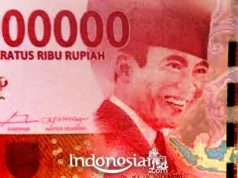Indonesia is a country that has a variety of traditional arts. One of these traditional arts is wayang. Wayang is an art that is very well known in Javanese society. Did you know that wayang is not an Indonesian art? Where do the puppets come from?
Wayang is an art that originated from southern China. This art was brought by ethnic Chinese immigrants to various regions of the archipelago in the past and has become one of the types of traditional Indonesian arts. In China, puppets are called Potehi. What is Potehi?
Potehi comes from the word pou which means cloth, te which means bag and hi which means puppet. Potehi is a puppet made of cloth. Potehi is of course like the Golek puppet. In the Potehi art performance, the dalang will stick their hands into the cloth and play it like any other kind of puppet. This art is around 3,000 years old and originated in China.
According to legend, this puppet art was discovered by prisoners in a prison. Five people were sentenced to death. Four people immediately became sad, but the fifth person had a bright idea. Instead of grieving for death, it’s better to entertain yourself. So, these five people took utensils that were in the cell such as pans and plates and began to beat them to accompany their puppet play. The delicious sound emanating from this emergency port was also heard by the emperor, who finally gave his pardon.
Historically, it is estimated that this type of art existed during the Jin Dynasty 晉朝 (265-420 AD) and developed during the Song Dynasty 宋朝 (960-1279). Potehi entered Indonesia (formerly Nusantara) through Chinese people who entered the archipelago around the 16th to 19th centuries. The valid data is in the form of early notes about Potehi puppets in Indonesia, comes from an Englishman named Edmund Scott. He went to Banten 2 times, between 1602 and 1625. He mentions, an opera-like performance, which was held when the junks were going to or when returning to China. He observed carefully that this performance was connected with worship and that the monks were offering sacrifices, and prostrated on the ground before preparation. [1] Scott wrote that “they were very fond of plays and singing, but their voices were the worst anyone would hear. The plays or interludes they performed as a service to their gods: in the beginning, they used to burn sacrifices, the priests time and time again. kneeling down, one by one. This play is usually held, when they see a junk or boat departing from Banten for China. The play sometimes starts at noon and ends the next morning, usually on an open road, on a platform erected for that purpose. . “
Explorers 1-2 centuries later described that this theater, which was originally from China, was already established in the nomadic societies of the main cities at that time. Unfortunately, only a few descriptions of the language used in the show. There is also no sarong puppet theater from South Fujian, known as po-te-hi, which still exists today in East and Central Java. In the 18th century, a German named Ernst Christoph Barchewitz (who lived for 11 years in Java) pointed out that when he saw him in Batavia these shows were performed in Chinese.
Not just a performing art, Wayang Potehi for ethnic Chinese has a social and ritual function. Not different from other puppets in Indonesia.
Some of the plays that are often performed in Wayang Potehi are Si Jin Kui 薛仁貴 (Ceng Tang 征 東 and Ceng Se 征西), Hong Kiam Chun Chiu 鋒 劍 春秋, Cu Hun Cau Kok 慈雲 走 國, Lo Thong Sau Pak 羅 通 掃 北 and Pnui the Jade 方世玉. Each puppet can be played for various characters, except Koan Kong 關 公, Utti Kiong 尉遲恭, and Thia Kau Kim 程 交 金, whose face color cannot change.
In the past, Potehi only played plays that came from classical Chinese stories such as legends of dynasties in China, especially when played in a temple. However, currently Wayang Potehi has taken stories outside of classic stories such as the novel Se Yu 西遊記 (Pilgrimage to the West) with the famous Kera Sakti character. At the time of its first entry into the archipelago, wayang potehi was played in the Hokkien dialect. Along with the times, this puppet was also played in Indonesian. Therefore, non-Chinese residents could enjoy the story that was played.
Interestingly, it turns out that the plays that are often played in this wayang have been adapted into characters in ketoprak. For example, the character Si Jin Kui 薛仁貴 who was adopted as the character Joko Sudiro. Or if you are a big fan of ketoprak, you should be familiar with the character of Prabu Lisan Puro who turns out to be taken from the character Li Si Bin 李世民, the second emperor of the Tong Dynasty 唐朝 (618-907).
Musical instruments accompanying the Potehi art consist of gembreng / lo 鑼, kecer / cymbals 鑔 cheh and 鈸 puah, flute / phin-a 笛 仔, (guitar / gueh-khim 月琴), rebab / hian-a 絃 仔, tambur / kou 鼓, Trumpet / ai-a 噯 仔, and piak-kou 逼 鼓. This last tool is a 5-centimeter long cylinder, similar to a small noodle seller, which if you hit it wrongly, it won’t make a “trok” – “trok” sound as it should.
The 1970s to the 1990s could be said to be bleak times for Potehi. That was due to the repressive actions of the rulers at that time against Chinese culture. In fact, the cultural values brought along by the Chinese since centuries ago have grown with local culture and become Indonesian culture. In that gloomy period, Potehi seemed to have experienced stunting. It was very difficult to find the performance at that time. Especially if it weren’t for the difficulty in obtaining permits. However, if observed, Potehi activists are mostly native Indonesians. Imagine how much they appreciate a culture that can be said to be not the original Indonesian culture. However, after the reformation took place, fresh air seemed to save this art. Wayang Potehi can be performed again and of course, not in secret. Hopefully this article is useful and adds to your insight. Come on, get interesting and insightful information from Indonesiar.com.
Source: wikipedia






























